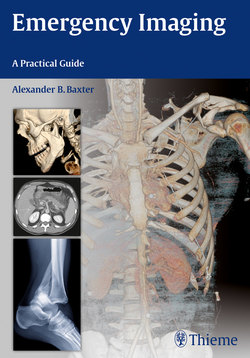Читать книгу Emergency Imaging - Alexander B. Baxter - Страница 31
На сайте Литреса книга снята с продажи.
Оглавление17
2Brain
pressure leads to transependymal migra-tion of CSF into the periventricular white matter, where it is resorbed via parenchy-mal capillaries.
On CT, cerebral edema is lower in density than surrounding normal parenchyma. On MRI, signal intensity of edema is lower than that of brain parenchyma on T1-weighted images and higher on T2-weighted im-ages. Diusion-weighted image (DWI) and apparent diusion coecient (ADC) map-ping sequences can distinguish between cytotoxic edema (restricted diusion) and vasogenic or interstitial edema (normal or increased diusion). Fluid attenuation inversion recovery (FLAIR) sequences sup-press intraventricular CSF signal and are sensitive for detecting adjacent areas of in-terstitial edema (Fig. 2.3).
◆Cerebral Edema Patterns
Localized cerebral edema may be classified as cytotoxic, vasogenic, or interstitial, al-though overlap is often present. Cytotoxic edema consists of intracellular swelling caused by depletion of adenosine triphos-phate (ATP) and consequent sodium/potas-sium membrane pump failure. Most typical of cerebral infarct and anoxic injury, cyto-toxic edema aects both white and gray matter similarly on most imaging studies.
Vasogenic edema, in contrast, prefer-entially involves white matter and results from conditions that increase intracerebral capillary permeability. Vasogenic edema is often due to brain contusion, severe hy-pertensive disease, primary and metastatic neoplasms, or inflammatory conditions.
Acute hydrocephalus can cause inter-stitial edema, as elevated intraventricular
Fig. 2.3a–f a,b Cytotoxic edema in cerebral infarction. Extensive right frontal and temporal low-density change with loss of dierentiation between gray and white matter, sulcal eacement, and ipsilateral ventricular eace-ment. The middle cerebral artery is dense, indicating thrombosis.
c,d Vasogenic edema due to hemorrhagic brain metastasis from lung carcinoma. Left frontal white mat-ter hemorrhage with surrounding low attenuation edema that spares the cortical gray matter. FLAIR MRI shows a hemorrhagic nodule with extensive surrounding high-signal edema limited to the white matter. e,f Interstitial edema in hydrocephalus due to fourth-ventricle obstruction by meningioma. Acute hydro-cephalus with low-density transependymal CSF resorption, most conspicuous at the frontal, occipital, and temporal horns of the lateral ventricles.
